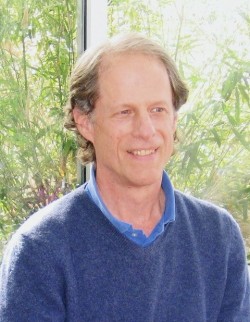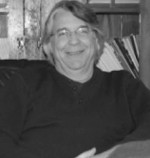Vitality
Join Pedram Shojai, OMD, for his free screening of Vitality.
According to Jayson and Mira Calton, founders of Calton Nutrition, "this movie shares ways to increase...
Psycho-Peristalsis in the Shared Body
In this article we offer our experiences working with psycho-peristalsis within the intersubjective field, within the shared body, with curiosity: what potential benefits may arise by using psycho-peristalsis in this way?
The Psychology and Neurobiology of Mediation
Elizabeth E. Bader's recent publication, The Psychology and Neurobiology of Mediation (in The Cardozo Journal of Conflict Resolution) is now available for SPT Readers. Elizabeth looks at mediation in terms of the nervous system's response to threat and challenge (what she calls the IDR cycle--inflation, deflation, and realistic resolution). She explores the links between the psychological and neurobiological dimensions of mediation and integrates the work of Stephen Porges (Polyvagal Theory) and Peter Levine (Somatic Experiencing). She notes a distinct feature of mediation is that those involved experience both threat and safety responses simultaneously.
The Handbook of Body Psychotherapy and Somatic Psychology: A Day Long Celebration
Medical trauma in patients and providers: interpersonal neurobiology and the autonomic nervous system with Jacqueline Carleton, PhD
Thoughts about Addiction, Memory, Trauma and Somatic Experiencing®
Having no memory of an event does not mean it has no impact on one's life. These 'forgotten' events might still affect people's perceptions, emotions and behaviors without them ever being able to make a connection between present and past or process them verbally at a therapeutic session.
Eugene Gendlin, Somatic Pioneer
One of the most important and influential figures in somatic psychology is… a philosopher. Odd? Actually not. Because the more we learn about Eugene Gendlin’s revolutionary philosophy of the body, the more it makes sense that he is known as one of the originators of modern body-oriented psychotherapy.
Yes It’s Your Parents Fault
Experts in the fields of psychology, neuroscience, sociology and education say that attachment theory’s underlying assumption — that the quality of our early attachments profoundly influences how we behave as adults — has special resonance in an era when people seem more attached to their smartphones than to one another.
Short Stories from the Biodynamic Psychotherapy Room: Beginning to Feel
I entered my room. I like my therapy room. It is large, spacious and
painted in my favourite colours: dark aubergine, purple and lilac. It is not the exact shade of lilac I envisioned when describing it to the decorator, but I like it now; the touch of pinkish lilac makes me feel softer, warmer. A dash of green lawn hides beyond the azure curtains.
What did my client say yesterday? That it was the first time she had noticed that the walls of my room are pink. So many times she had been in this room – for how many years now? Over two years, almost every fortnight; over fifty sessions of at least one hour each. But still she hadn’t noticed the pink walls, despite being artistic. In her work she employs a great deal of awareness regarding the nature of colour and the slight differences between shades.
Into the Void: A Journey of Longing, Love and Eros
I am about to take two risks. The first is a great big leap into the unknown; at age 62 I have decided to end a marriage of 30 years. The second is to begin this article with this disclosure, which I have chosen to do because alongside my vulnerability is an energetic expansion and a clarity related to the decision to let go. To let go of what is known in my life and allow myself to be guided by inner truth into a void. To move into the unknown with trust in my heart knowing that this is a move toward love.
The Handbook of Body Psychotherapy and Somatic Psychology: A Day Long Celebration
Nancy Eichhorn offers her experience listening to six speakers’ viewpoints at the day long celebration honoring The Handbook of Body Psychotherapy and Somatic Psychology in a four-part blog posting with some longer writings and some short eclipses of the content shared. As well, she hopes to reflect their collective themes that resonated with William Cornell’s call for institutions to train ‘embodied’ psychotherapists rather than body psychotherapists—a play on the aliveness of the adjective rather than the solid structural nature of a noun.














